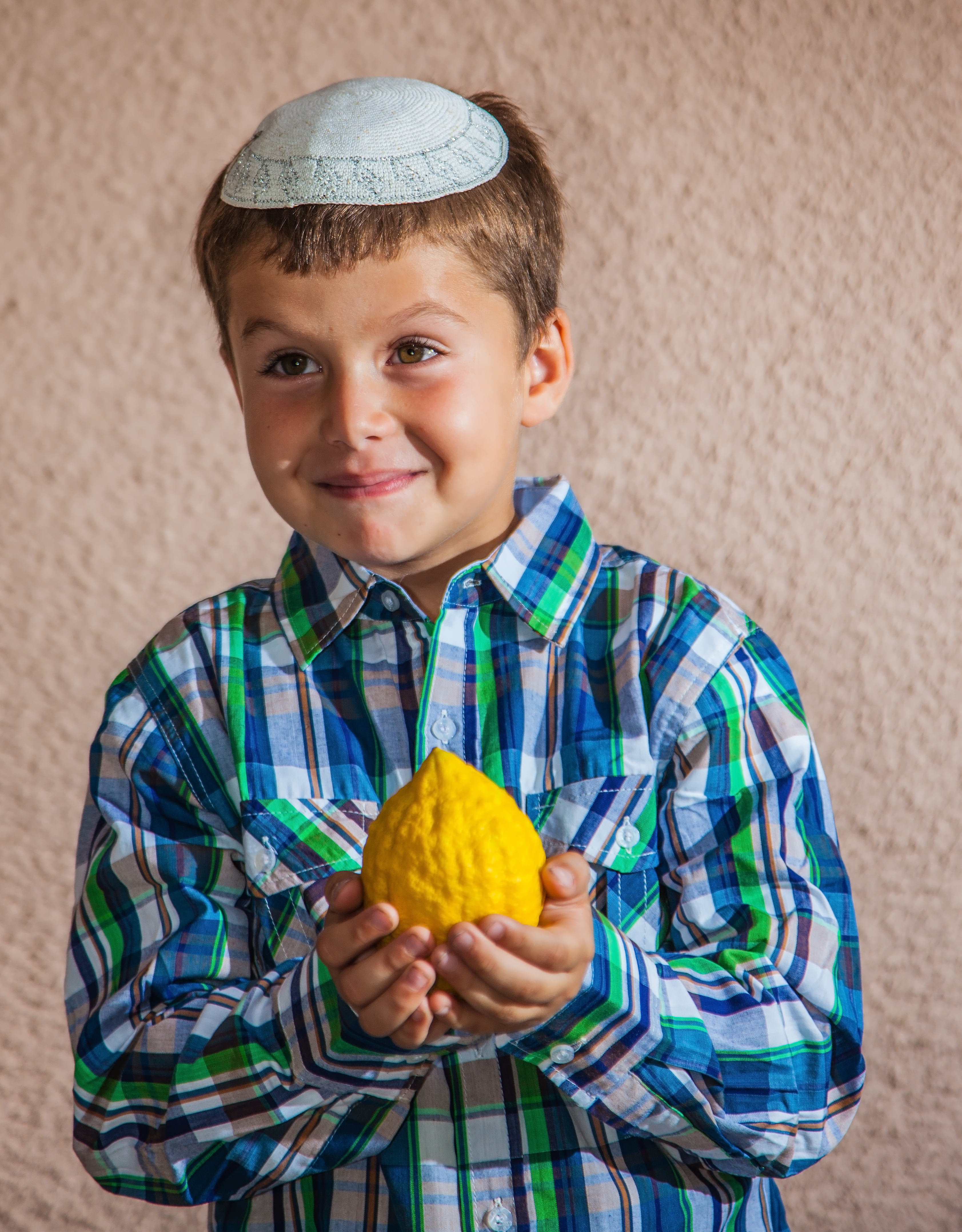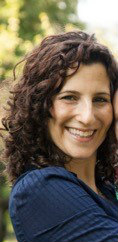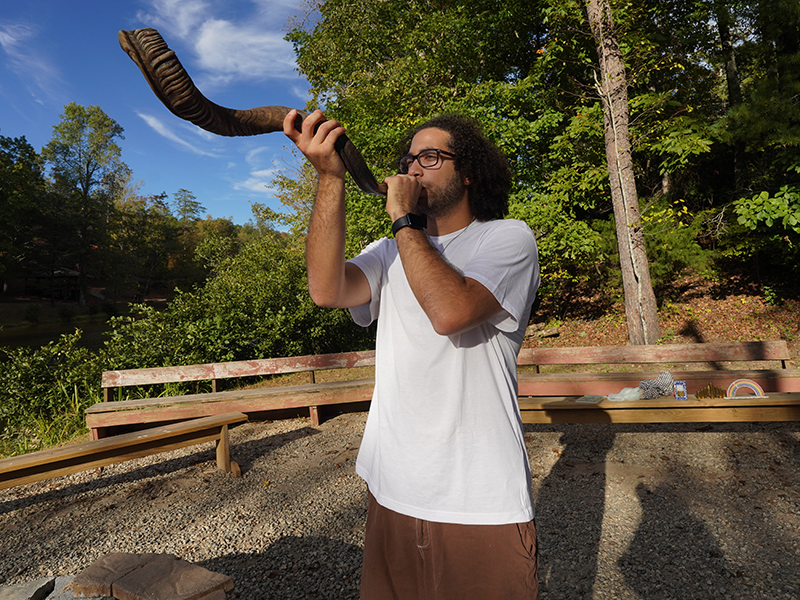
On the 15th of Tishrei, just five days after Yom Kippur ends, we usher in the holiday of Sukkot (translated into English as “booths” or “huts”). Sukkot, our Festival of Booths, is a festival of thanksgiving: for the food we have harvested, the homes we are so privileged to call our own, and for the natural world that surrounds us.
Throughout the holiday of Sukkot, we call to mind the temporary dwellings in which the Israelites lived during their desert journey to the Promised Land (Lev. 23). We honor our ancestors – and our God who freed them – by erecting sukkot (physical booths or huts) of our own, where we are meant to eat, gather with friends, and even sleep (weather permitting!) during this seven-day holiday.
Sukkot come in all materials and sizes, but as different as they might look on the outside (and inside), they still must share these basic criteria: A sukkah must be large enough for a grown person to stand in, and it must be wide enough to fit at least a single table. A sukkah must have at least two walls plus a portion of a third (so let’s be safe and just say three), and the walls must be strong enough to stand up to a common wind (we’re not talking hurricane-strength gusts here). It must be built under the open sky, rather than under a tree or building, and it must provide more shade than sun. The roof of the sukkah must be made of natural materials, like tree branches or palm leaves or bamboo (these natural materials are called s’chach), and it should leave enough space for the people inside to look up and see the stars at night.
The sukkah is fragile but, at the same time, it is sturdy enough; it’s impermanent, and yet it remains a permanent fixture of our history and our tradition.
Sukkot is one of our Shalosh Regalim, or three pilgrimage festivals (along with Passover and Shavuot). In ancient times, Israelites would travel from far and wide to the Temple in Jerusalem to observe the festival. Today, we observe Sukkot in our synagogue communities and at home – and many people still travel to Israel, as well! On the first and last days of Sukkot, we gather in synagogue for the festival prayers and for the recitation of Hallel, songs of praise.
On the first day of Sukkot especially, but throughout the holiday as well, we fulfill the very special mitzvah (commandment) of shaking the lulav. Actually, what we collectively call the lulav is made up of four different species: a palm, a myrtle, and a willow branch, along with a wonderfully fragrant etrog, or citron fruit. All of these species together are required when “shaking the lulav.” We shake in every direction – up/down, east/west, north/south – to remind ourselves that God is everywhere and that holiness surrounds us always. The lulav also serves to remind us of the important connection between Sukkot, our natural world, and the precious resources we take from our environment.
One of the most beautiful mitzvot associated with Sukkot is the commandment to dwell in the sukkah. We fulfill that mitzvah by eating as many meals and doing as much “living” in the sukkah as we can (“living” might mean reading a book or hanging out with friends, gazing at the stars, or drinking your morning coffee, for example). Sukkot is also a wonderful time to practice the Jewish value of hachnasat orchim, of welcoming guests into our sukkot for meals and gatherings or even just a cup of tea. Sharing our sukkot with family and friends is what brings so much joy to the holiday.
We also welcome very special guests, called ushpizin, into our sukkot. The ushpizin are our ancient patriarchs and matriarchs and historical figures of the Torah; we invite them into our sukkot to remind us of the longstanding chain of tradition – and our place within it – and to infuse our spaces with their wisdom and courage, their faith and fortitude.
Sukkot is a holiday of many names. In some places, it’s called Chag HaAsif (Feast of the Harvest, or Ingathering), which refers to the food we have harvested throughout the season. In other places, it’s just called “heChag,” The Festival, perhaps indicating just how important Sukkot is in our tradition. But one other name for the holiday, and my favorite, is Z’man Simchateinu, which loosely translates into a “Time of Joy.” After the solemnity of Yom Kippur, we reawaken our spirits, revitalize our souls, and we rejoice! We eat, we drink, we dance, we sing; we lounge, we laze, we meditate and we stargaze.
And as we sit in our fragile and temporary sukkot, we take note of every precious day, and thank God we are here – to bask in the company of family and friends and to share in the beauty of the holiday, together.
Rabbi Sara Y. Sapadin is a rabbi and mother of four. Ordained by HUC-JIR, Sara currently serves Temple Emanu-El in New York City, as an adjunct rabbi. Sara has written for a number of Jewish publications and is also a proud contributor to The Sacred Calling: Four Decades of Women in the Rabbinate (CCAR Press). She, her husband Danny, and their children reside in New York City, where they are raising their dog to be Jewish.
Explore Jewish Life and Get Inspired
Subscribe for Emails


